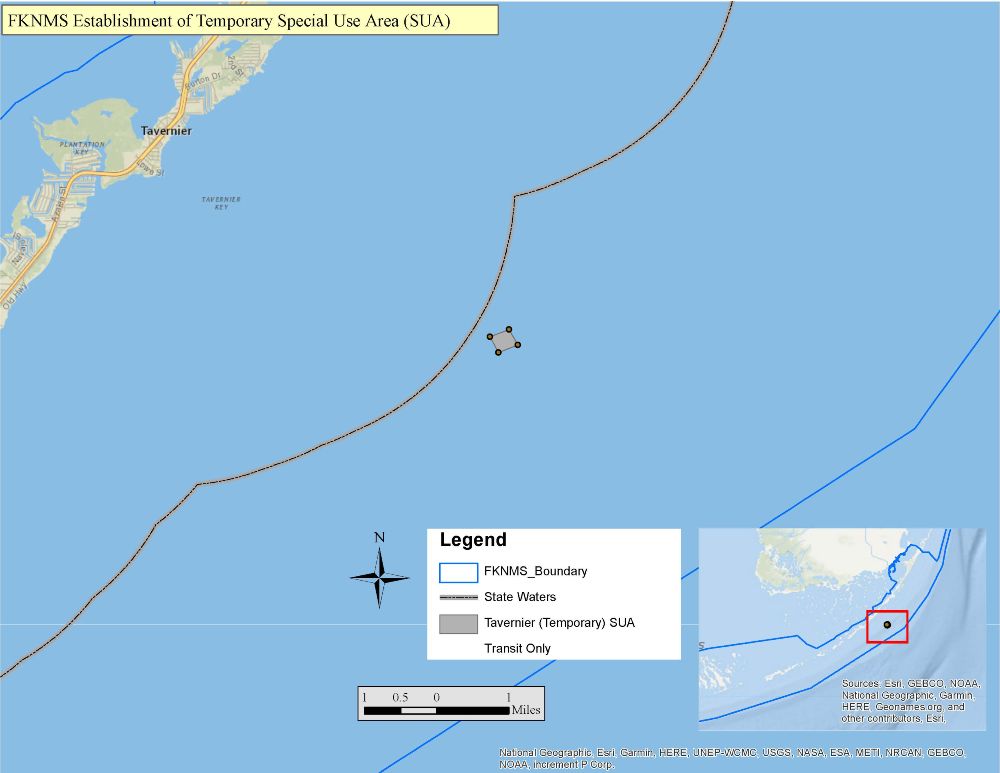NOAA Establishes Temporary Special Use Area to Protect Relocated Florida Keys Coral Nursery
By Scott Atwell
September 2023
In response to extreme ocean temperatures, NOAA has used its emergency authority to create a temporary special use area in Florida Keys National Marine Sanctuary to protect endangered corals that have been relocated to a nursery in federal waters approximately five miles southeast of Tavernier, Florida. The temporary regulation lasts 60 days, with the option for one 60-day extension, and prohibits all entry except for continuous transit without interruption.
“It’s critical for managers to have the ability to quickly respond to urgent situations,” said Sarah Fangman, sanctuary superintendent. “Coral bleaching created by the recent marine heatwave has forced practitioners into an emergency response, moving endangered corals to cooler, deeper water. The Tavernier (Temporary) Special Use Area will limit physical impact to sensitive coral nursery stock from anchoring, unintentional fouling of fishing gear, and bottom tending fishing gear including traps.”


NOAA’s Coral Reef Watch suggests that extreme ocean temperatures will likely persist until at least October 2023. Coral nursery stock located in shallow nurseries (20-30 feet deep) are most at risk, since nearshore environments heat up much more intensely than offshore locations. The relocated site, protecting 2,800 coral fragments for NOAA’s Mission: Iconic Reefs, has been established in 70 feet of water.
The emergency action is taken in accordance with the sanctuary’s original 1997 regulations: “where necessary to prevent or minimize the destruction of, loss of, or injury to a Sanctuary resource, any and all activities are subject to immediate temporary regulation, including prohibition.” Because further damage to these sensitive nursery corals would occur if the prohibition implemented by this rule was delayed, NOAA found good cause to waive notice and public comment, as both would be impracticable and contrary to the public interest.
It has been 20 years since the sanctuary utilized the emergency provision. In 2003, a similar coral stress event resulted in the White Bank Dry Rocks (Temporary) No-Entry Zone near Key Largo.
The GPS location of the .07 square-mile area can be found in the free, Marine Sanctuary Explorer mobile app by searching “Tavernier (Temporary) Special Use Area.”

Boundary Coordinates for Tavernier (Temporary) Special Use Area
| Point No | Latitude | Longitude |
|---|---|---|
| 1 | 24.96934 | -80.44378 |
| 2 | 24.97076 | -80.43955 |
| 3 | 24.96765 | -80.43759 |
| 4 | 24.96612 | -80.44186 |
| 5 | 24.96934 | -80.44378 |
Mission: Iconic Reefs is one of the largest and most comprehensive coral restoration programs in history, supported by a myriad of partners and focusing on seven reefs in the Florida Keys: Carysfort Reef, Horseshoe Reef, Cheeca Rocks, Sombrero Reef, Newfound Harbor, Looe Key Reef, and Eastern Dry Rocks.
Scott Atwell is the communications and outreach manager for Florida Keys National Marine Sanctuary


